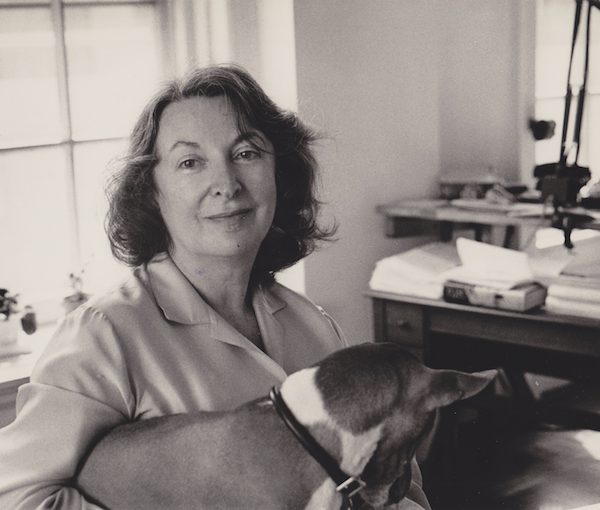Movie review by Greg Carlson
Hard to say whether non-cinephiles will be interested enough to watch a feature-length documentary about a movie critic, but Rob Garver’s “What She Said: The Art of Pauline Kael” is a worthwhile biography of a fascinating life led with purpose and conviction. Of course, the film-obsessed won’t need to be told twice — Kael’s passionate, singular voice inspired moviemakers and movie viewers for decades. If Roger Ebert is the best-known American film critic of the last century, then Kael is certainly the most influential.
Garver draws heavily from the career highs and lows detailed in the late Brian Kellow’s top-notch 2011 book “Pauline Kael: A Life in the Dark,” and that’s more than enough to provide the film with a complete supply of devilishly entertaining anecdotes and a solid structure. While it may seem impossible in the fractured landscape of today’s internet for one writer to wield enough power to make a film’s fortunes, Kael’s impact astonishes.
The section on “Last Tango in Paris” — in the running with “Bonnie and Clyde” and “Nashville” as her most famous rave (see her notes on “The Sound of Music,” “2001: A Space Odyssey,” “Blade Runner,” and “Shoah” for the flipside) — illustrates the extent to which Kael’s enthusiasm could lift a movie’s commercial prospects. Her full “Last Tango” review, in which she links Bertolucci’s controversial film to the “hypnotic excitement” of Stravinsky’s “The Rite of Spring,” was used as the advertising campaign in a two-page New York Times Sunday spread.
Molly Haskell, who happened to be married to Kael rival Andrew Sarris, wonders aloud why Pauline would defend a movie that was so “artificial, forced, calculated, ugly, [and] unerotic.” Some have accused Garver of crafting a hagiography, but they miss one of the film’s most thrilling dimensions: the presence of those with whom Kael disagreed and those she stabbed with the razor-sharp tip of her poison-dipped pen. The clip in which David Lean admits to having his confidence shaken by Kael’s cruelty is poignant, no matter what you think of “Lawrence of Arabia.”
Plenty of directors and stars feared Kael’s reactions to their movies, and Garver includes an entertaining montage of personal letters written (by the likes of Steven Spielberg, Jessica Lange, Kevin Bacon, Carol Burnett, and many others) in the hope of maintaining favor or just making a connection with the fierce cinema savant. The titles of her books — “I Lost It at the Movies,” “Kiss Kiss Bang Bang,” “When the Lights Go Down” — cheekily allude to the seductive, sexual pull offered by the filmgoing experience. How many of us studied those collections carefully and closely, along with each must-read piece in The New Yorker?
Even though Garver is faced with the challenging task of balancing the personal components of Kael’s life and the professional examination of her peculiar vision for the cinema, he finds a rhythm and settles into it. Kael’s movie-mad minions will gobble up the latter, made all the more tantalizing by dozens of scenes from the films she championed or throttled. There are plenty of talking heads, including Kael’s eloquent and indispensable daughter Gina James, but “What She Said” is most alive and electrifying when Garver uses old radio and television clips of the critic speaking for herself.
